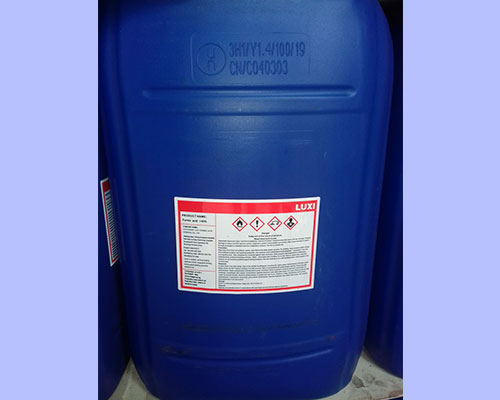Formic Acid

Description :
Formic Acid is a reagent comprised of the organic chemical formic acid that cleaves proteins into peptides at the C- or N-terminal side of an aspartate residue.
Formic acid is the simplest carboxylic acid, containing a single carbon. Occurs naturally in various sources including the venom of bee and ant stings, and is a useful organic synthetic reagent. Principally used as a preservative and antibacterial agent in livestock feed. Induces severe metabolic acidosis and ocular injury in human subjects. It has a role as an antibacterial agent, a protic solvent, a metabolite, a solvent and an astringent. It is a conjugate acid of a formate
Formic acid appears as a colorless liquid with a pungent odor. Flash point 156°F. Density 10.2 lb / gal. Corrosive to metals and tissue.
Appearance :
Colorless heavy liquid Boiling Pt / Range : 86.7o C Odour : Chloroform like odour Flash Point : Practically non-flammable Flammability/Explosive : No Corrosive : No Chemical Stability : Stable Incompatibility : Strong Caustics
Uses :
- Adhesives and sealant chemicals, Agricultural chemicals (non-pesticidal)
- Bleaching agents
- Corrosion inhibitors and anti-scaling agents
- Intermediates
- Paint additives and coating additives not described by other categories
- Plating agents and surface treating agents
- Preservative
- Process regulators
- Processing aids, not otherwise listed
- Agricultural products (non-pesticidal)
- Apparel and footwear care products
- Automotive care products
- Building/construction materials - wood and engineered wood products
- Electrical and electronic products
- Explosive materials
- Fabric, textile, and leather products not covered elsewhere
- Fuels and related products
- Laundry and dishwashing products
- Personal care products
- Water treatment products
- Industrial, urethane intermediate
Packing : : 25/35 KG CARBOYS
Minimum Quantity : 10 Carboy